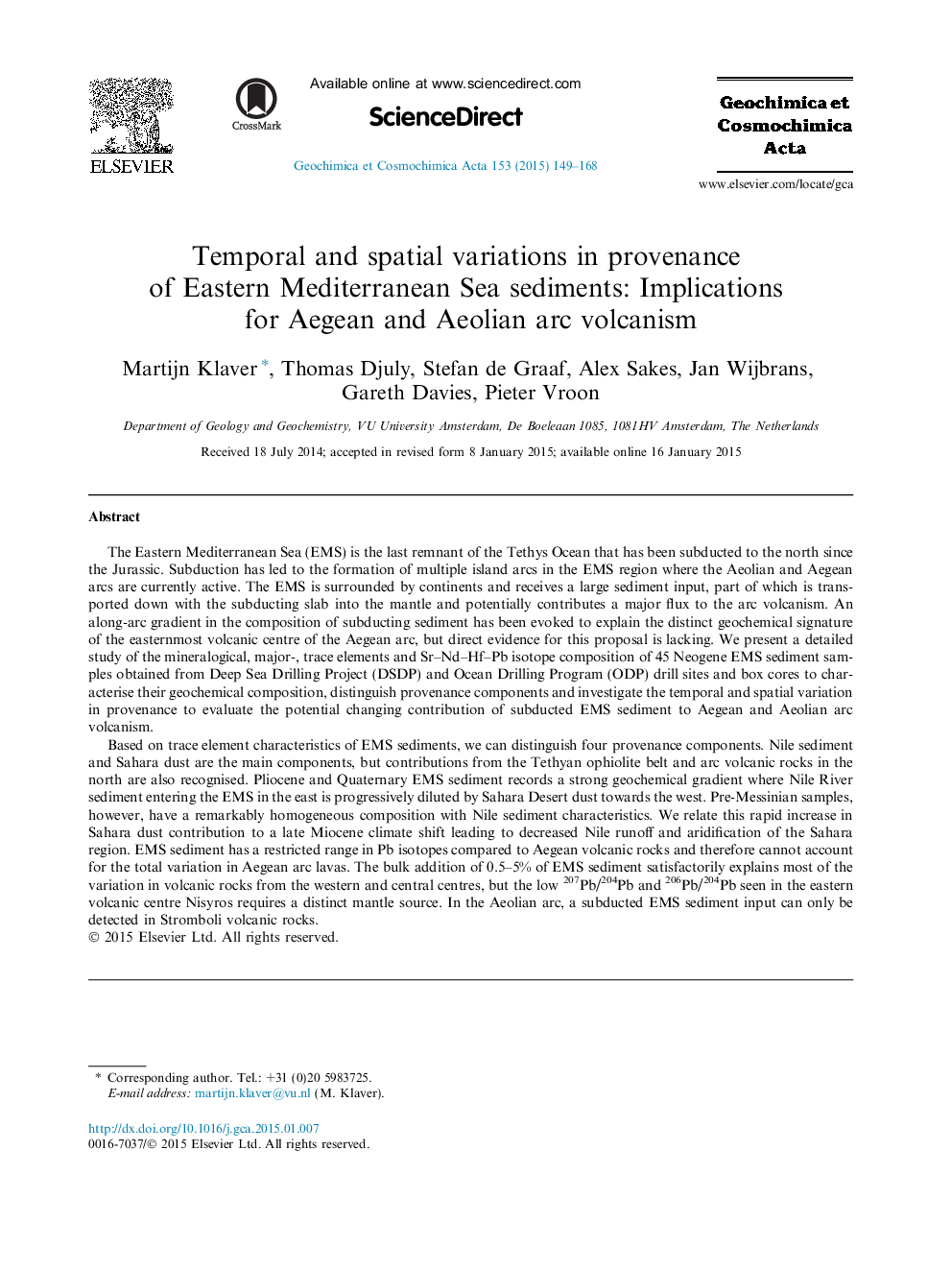| Article ID | Journal | Published Year | Pages | File Type |
|---|---|---|---|---|
| 4701974 | Geochimica et Cosmochimica Acta | 2015 | 20 Pages |
The Eastern Mediterranean Sea (EMS) is the last remnant of the Tethys Ocean that has been subducted to the north since the Jurassic. Subduction has led to the formation of multiple island arcs in the EMS region where the Aeolian and Aegean arcs are currently active. The EMS is surrounded by continents and receives a large sediment input, part of which is transported down with the subducting slab into the mantle and potentially contributes a major flux to the arc volcanism. An along-arc gradient in the composition of subducting sediment has been evoked to explain the distinct geochemical signature of the easternmost volcanic centre of the Aegean arc, but direct evidence for this proposal is lacking. We present a detailed study of the mineralogical, major-, trace elements and Sr–Nd–Hf–Pb isotope composition of 45 Neogene EMS sediment samples obtained from Deep Sea Drilling Project (DSDP) and Ocean Drilling Program (ODP) drill sites and box cores to characterise their geochemical composition, distinguish provenance components and investigate the temporal and spatial variation in provenance to evaluate the potential changing contribution of subducted EMS sediment to Aegean and Aeolian arc volcanism.Based on trace element characteristics of EMS sediments, we can distinguish four provenance components. Nile sediment and Sahara dust are the main components, but contributions from the Tethyan ophiolite belt and arc volcanic rocks in the north are also recognised. Pliocene and Quaternary EMS sediment records a strong geochemical gradient where Nile River sediment entering the EMS in the east is progressively diluted by Sahara Desert dust towards the west. Pre-Messinian samples, however, have a remarkably homogeneous composition with Nile sediment characteristics. We relate this rapid increase in Sahara dust contribution to a late Miocene climate shift leading to decreased Nile runoff and aridification of the Sahara region. EMS sediment has a restricted range in Pb isotopes compared to Aegean volcanic rocks and therefore cannot account for the total variation in Aegean arc lavas. The bulk addition of 0.5–5% of EMS sediment satisfactorily explains most of the variation in volcanic rocks from the western and central centres, but the low 207Pb/204Pb and 206Pb/204Pb seen in the eastern volcanic centre Nisyros requires a distinct mantle source. In the Aeolian arc, a subducted EMS sediment input can only be detected in Stromboli volcanic rocks.
